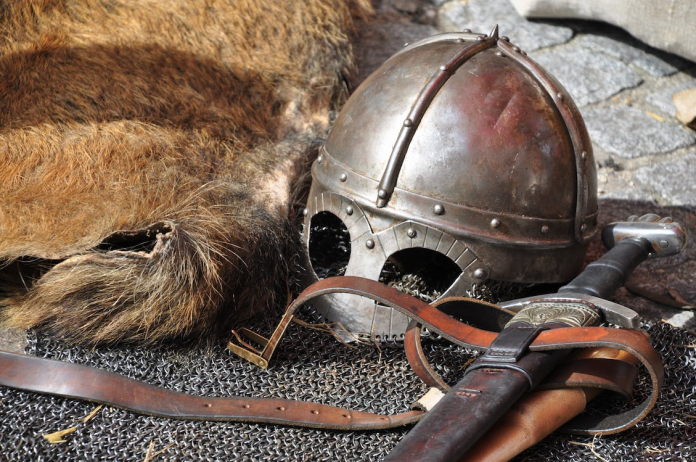Fantasy literature is a genre that has captivated readers for centuries with its imaginative worlds, fantastical creatures, and epic battles between good and evil. However, there’s more to these stories than just their surface-level elements. One of the most significant aspects of fantasy literature is the use of symbolism to convey deeper meanings and themes. From mythical creatures to magical artifacts, authors use symbols to create a rich and complex world that goes beyond what’s on the page.
For example, J.R.R. Tolkien’s The Lord of the Rings is a classic work of fantasy literature that’s known for its intricate use of symbolism. The Ring, a magical artifact that the characters must destroy to save their world, is a perfect example of how symbols can be used to convey multiple layers of meaning. On one level, the Ring represents power and control. Anyone who possesses it has the ability to dominate others and shape the world according to their desires. However, the Ring also represents corruption and the desire for more. Those who hold it for too long are consumed by its power and become twisted versions of themselves.
If you’re intrigued by the symbolism of animals, particularly the kookaburra meaning, you can explore its meaning further on centerspirited.
Other works of fantasy literature use symbolism in similarly complex ways. The Chronicles of Narnia by C.S. Lewis, for example, features a variety of mythical creatures that represent different virtues and vices. Aslan the Lion, who sacrifices himself to save one of the main characters, represents selflessness and courage. Meanwhile, the White Witch, who tempts the characters with promises of power and riches, represents greed and selfishness. These symbols create a rich and detailed world that goes beyond the plot and characters, adding a layer of depth and complexity that makes the stories even more compelling.
What is Symbolism?
Symbolism is the use of symbols to represent abstract concepts or ideas in a work of literature. These symbols can take many forms, including physical objects, animals, and mythical creatures. The use of symbolism in literature allows authors to convey complex ideas and themes in a way that is both memorable and impactful. In fantasy literature, symbolism is particularly important, as it can help create a fully realized world that feels immersive and engaging to readers.
There are two types of symbolism: overt and covert. Overt symbolism is when an author explicitly states the meaning of a symbol in the text. For example, if a character in a book gives a red rose to their love interest, the author might explicitly state that the rose symbolizes love. Covert symbolism, on the other hand, is when the meaning of a symbol is implied or left up to interpretation. This type of symbolism is more common in fantasy literature, where authors often create rich worlds that are open to multiple interpretations.
One of the benefits of covert symbolism is that it allows readers to engage with the text on a deeper level. By leaving the meaning of a symbol open to interpretation, readers are forced to think critically about the text and form their own opinions about what it means. This can lead to a more immersive and engaging reading experience, as readers become more invested in the story and its themes.
The Significance of Symbolism in Fantasy Literature
The use of symbolism in fantasy literature serves a crucial role in creating a fully-realized world that goes beyond the plot and characters. The themes and concepts that authors convey through symbolism help to create a sense of depth and richness to the stories, which in turn makes them more engaging and memorable to readers. One example of a symbolic object in fantasy literature is the dragon ring.
The dragon ring is a common symbol in fantasy literature, often used to represent power and authority. In many stories, the dragon ring is possessed by a powerful ruler or magical creature, and its possession grants the wearer significant power and control over others. This symbolism can be seen in J.R.R. Tolkien’s The Lord of the Rings, where the One Ring (which could be seen as a type of dragon ring) is sought after by many powerful characters who seek to use it for their own gain.
However, the symbolism of the dragon ring can also be more complex than simple power and authority. The ring may represent the corruption and temptation of power, as seen in The Lord of the Rings. The desire to possess the ring leads many characters to turn against their friends and commit heinous acts, ultimately leading to their downfall. The use of symbols like the dragon ring allows authors to create a complex and multifaceted world that engages readers on multiple levels, making the stories more memorable and impactful.
Examples of Symbolism in Fantasy Literature
There are many different symbols used in fantasy literature, and each can convey its own unique meaning and theme. One example of a common symbol is the magical sword. Magical swords are often used to represent heroism, bravery, and the fight against evil. This symbolism can be seen in J.K. Rowling’s Harry Potter series, where the Sword of Gryffindor is used by Harry and his friends to battle the dark wizard Voldemort. The sword is imbued with magical properties that make it a powerful weapon against evil, and its use in the story highlights the importance of standing up for what is right.
Another example of symbolism in fantasy literature is the enchanted forest. Enchanted forests are often used to represent a journey of self-discovery, transformation, and the unknown. The forest may be a place of danger or mystery, but it also represents the potential for growth and change. This symbolism can be seen in C.S. Lewis’s The Chronicles of Narnia, where the characters enter an enchanted forest and must navigate its dangers to reach their ultimate goal. The forest represents a journey of self-discovery and transformation, as the characters learn important lessons and grow as individuals throughout their adventure.
Finally, symbols like the dragon ring can also represent societal themes, such as power dynamics and the nature of authority. In many fantasy stories, the dragon ring is a symbol of control and dominance, and its possession is sought after by those who seek to gain power over others. This can be seen as a commentary on the nature of power and the struggle for control in society. The symbolism of the dragon ring allows authors to explore complex themes and ideas in a way that is both memorable and impactful, adding depth and complexity to their stories.
The Power of Symbols in Fantasy Literature
The power of symbols in fantasy literature goes beyond the stories themselves. Symbols can have a profound impact on readers and their interpretation of a work, allowing them to connect with the themes and ideas presented in the text on a deeper level. This connection can lead to a greater understanding and appreciation of the story, and can even inspire readers to take action in their own lives.
One of the benefits of symbols in fantasy literature is that they can transcend language and cultural barriers. Because symbols are often rooted in archetypes and universal themes, they can be understood by readers of different backgrounds and cultures. This means that fantasy literature can be a powerful tool for promoting understanding and empathy between people of different cultures and backgrounds.
Overall, the use of symbolism in fantasy literature is a powerful tool for creating a rich and immersive world that engages readers on multiple levels. From the dragon ring to the enchanted forest, symbols can convey complex themes and ideas in a way that is both memorable and impactful. By using symbols to create a world that feels both familiar and fantastical, authors can create stories that resonate with readers long after the final page is turned.
Conclusion
In conclusion, the use of symbolism in fantasy literature is a powerful tool that allows authors to create a world that is both fantastical and meaningful. By using symbols like the dragon ring, magical swords, and enchanted forests, authors can convey complex themes and ideas in a way that is both memorable and impactful. This creates a more engaging and immersive reading experience for readers, who are able to connect with the story on multiple levels.
Furthermore, the power of symbols in fantasy literature extends beyond the stories themselves. Symbols have the ability to inspire readers to think critically about the world around them, to consider universal themes and archetypes, and to connect with people of different cultures and backgrounds. This makes fantasy literature a valuable tool for promoting empathy, understanding, and self-reflection.
Overall, the use of symbolism in fantasy literature is a testament to the power of storytelling. By using symbols to convey deeper meanings and themes, authors are able to create a world that feels both familiar and fantastical, inspiring readers to think deeply about the world around them and to consider their own place in it. The dragon ring may be just one example of a symbol in the genre, but it serves as a reminder of the enduring power of fantasy literature and its ability to captivate and inspire readers of all ages and backgrounds






